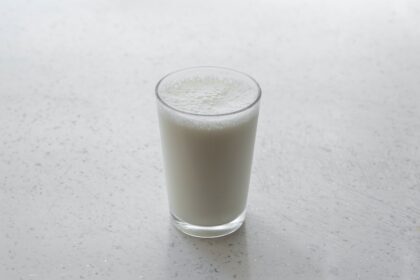How to stay fit during the menopause
Find out why staying active is so important during the menopause, and two workouts you can try.
Conversation and awareness around the true impact of menopause might finally be improving, but there is still plenty of work to be done in creating better support systems for half of the world’s population that goes through this major life transition.
And one of the cheapest, most accessible, and most effective tools for managing symptoms and overall health is exercise.
If you’re looking for some advice on how to stay active during menopause or perimenopause, the experts at Fitness Superstore explain how updating your fitness routine can be beneficial for a whole host of symptoms, ranging from mental health and metabolism to hot flushes and joint pain.
Finding (and maintaining) the motivation to exercise
If you’re struggling with the symptoms of menopause – whether it’s brain fog, anxiety, disturbed sleep, or aching limbs – then finding the motivation to exercise can feel like a real struggle.
Fitting in a workout might be low down on your to-do list (or even be something completely new to you), but getting regular exercise can actually be one of the best ways to improve your overall quality of life during menopause.
When beginning the process of getting active, remember that you don’t have to jump in at the deep end and start running for miles at 5:30 every morning! Instead, it’s far more realistic and sustainable to ease yourself into it and consider which form of physical movement you genuinely enjoy the most.
This might be hiking in the fresh air with your dogs or reviving a hobby you used to love like dance or yoga classes. Whatever it is, choosing something that you truly enjoy might seem like an obvious piece of advice, but you’ll find that it’s far easier to get up and work up a sweat when you take a real interest in the activity you’re doing.
How exercise can help to improve your self-esteem
Exercise can be closely tied to confidence, in more ways than one. Firstly, you may find that as your metabolism slows down during menopause, your body shape changes. This can knock your confidence and challenge your self-esteem, especially if your mood is already at a low ebb.
However, staying active is one of the best ways to regain control over your weight and help regulate your metabolism. Not only this, but the knowledge that you are looking after your body with a healthy diet and regular movement can also help you form a more positive self-image.
Secondly, low confidence may actually be one of the things preventing you from signing up for exercise classes or starting up a new workout routine in the first place, leading to a negative cycle. If this is the case, you may want to kickstart your fitness journey on your own terms with some simple home workouts or start building your own home gym.
There are a whole host of free workouts online, with everything from yoga and Pilates to HIIT and guided weight training videos. So, if you’re a beginner who wants to build up your fitness and confidence, a great place to start is in the comfort of your own home.
When you’re ready, you might invite a few friends over to work out with you, as this can help you stay motivated and talk to other women who may be going through the same thing as you.
Staying fit can support your mental and physical health
As well as helping you build a stronger, healthier body, working up a sweat throughout the day can also do wonders for your quality of sleep. As many women experiencing menopause will know, disturbed sleep from night sweats or anxious thoughts can leave you feeling drained and irritable the next day.
Countless studies have shown how regular exercise can help us drift off more easily into a deep sleep each night. Not only this, but some research even suggests that getting the blood pumping with regular workouts may reduce the intensity of hot flushes.
Whatever form it takes, physical exercise helps us to reduce stress and better manage anxiety by releasing endorphins and mood-boosting chemicals like dopamine. So, the next time you find yourself feeling overwhelmed or down, it may help to lace up your trainers and head out for a brisk walk or jog to clear your head and get you ready for a better night’s sleep.
Two workouts to try during the menopause
If you are looking for inspiration to stay active during the menopause, here are two workouts to try.
1) Strength training
The idea of lifting weights might feel a little daunting when you’re just getting started, but incorporating things like dumbbells, kettlebells, or ankle weights into your exercise routine can have a whole host of benefits.
Building up your muscle mass not only helps to fire up your metabolism and aid weight loss, but stronger muscles also support and protect your joints. This is particularly important for women during menopause because we are at a much higher risk of osteoporosis.
Start out with a few basic weighted exercises like squats and lunges with a light kettlebell to work your legs, or gentle seated twists while holding a medicine ball to strengthen your core muscles. See which you enjoy the most and feel the most benefit from, and you can slowly incorporate them into your weekly workout routine.
Just Make sure you fuel your body with healthy sources of carbohydrates and protein when you start weight training, so that you have plenty of energy and your muscles can recover properly after each session.
2) Yoga
As a low impact yet very effective form of exercise, yoga is a great way to stay flexible and active while also looking after your mental health. As it encourages mindfulness and slowing down your thoughts, this can be particularly helpful if you are struggling with perimenopausal symptoms like anxiety and brain fog.
Maintaining flexibility is also a great way to stretch and protect your joints, meaning you can alleviate any aches and pains you may feel throughout the day.
Another benefit of yoga is that you can start at any fitness level, and all you need is a mat. You may also want to invest in some aids like a block, pillows, or straps, as these can help you stretch more comfortably when you’re a beginner.
Simply starting or ending your day with ten minutes of yoga can make the world of difference to your mind and body, so start slow and work your way up to longer sessions as you gain more confidence and flexibility.
Staying active can be one of your best tools for managing menopausal symptoms
If you’re struggling with low energy, disturbed sleep, and poor mental health during menopause, exercise might seem like the last thing you want to do. However, staying active can actually be one of the best tools at your disposal when managing your symptoms and looking after your mental health.
Above all, remember that your fitness routine doesn’t have to be perfect or at an advanced level: simply keeping up some regular movement through activities that you enjoy can make the world of difference. It’s even better if you can get moving with friends and family, as this is a great way to get talking and stay social, which can be a bigger source of support than you may realise.
Read more advice on the menopause
If you’d like more advice to help you manage menopause symptoms, we recommend reading these articles:
- Five ways that going vegan could help you manage menopause symptoms
- 11 of the most frequently asked questions about the menopause – answered by a gynaecologist
- What to eat to reduce your menopause symptoms
- Eight ways you can make the most of the menopause
Abbie Wilkins is Training Manager at Fitness Superstore. Founded in 1994, Fitness Superstore is the biggest supplier of specialist fitness equipment in the UK.
Photo by RODNAE Productions










